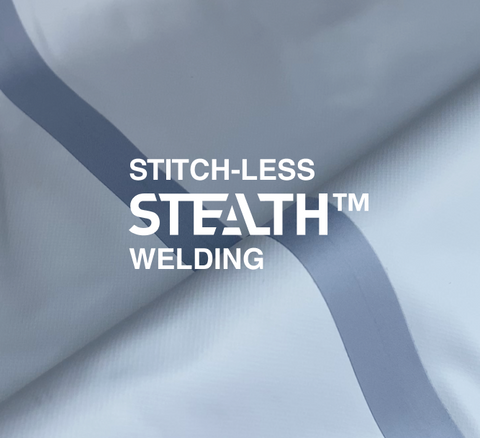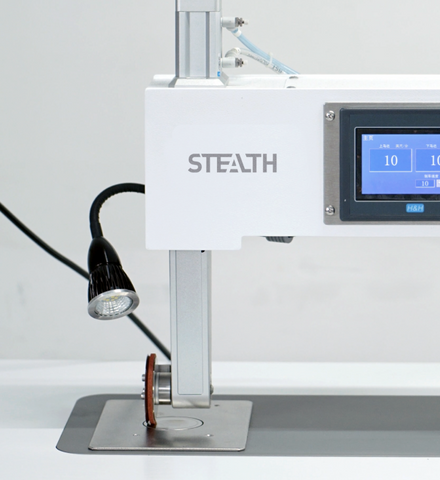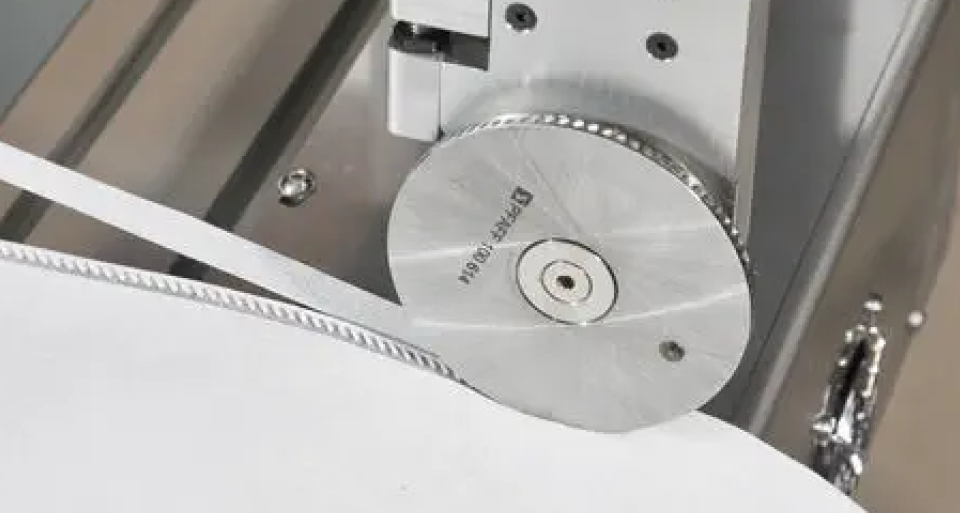BEHIND THE SEAMS
STITCH-LESS REVOLUTION

At Expio, we have partnered with Stealth™ technology, utilising their patented sonic and high-frequency processes capable of precision welding our bio-nylon styles.
We believe that not only are they more refined than stitched and lapped seams, but they perform much better too.
Why? What’s the problem with stitching?
Despite the rapid evolution of performance fabrics over the last decade, many manufacturing technologies that promise protection against the elements fail to match modern fabrics performance or impermeable qualities. Weak seams allow exposure to water and air, weak glue delaminates over time, and heat damage through tape application prohibits lightweight garment advancements.

Our vision of the future.
Stealth™ are the leading global manufacturing experts in performance gear and have developed a patented seam welding technology that removes the need for stitching. The technology results in tougher, warmer seams that are more durable, for longer-lasting products that protect from the harshest elements.
This expertly engineered welding process uses no stitching, no external heat, and no glue. This results in performance wear that is 50% stronger, 90% warmer, and has half the thickness of traditional seams which for the first time enables lightweight fabrics to be welded without damage.

Garment welding explained.
Seam joining techniques for garments have traditionally involved some form of stitched seams to assemble the garment. For the makers of outerwear garments, providing a waterproof and durable seam is often a goal since the usefulness of outerwear may be degraded if water penetration is possible along the outerwear seams.
As technology has progressed, over the last decade, we’ve seen the development of seam welding. Welding techniques vary – but they commonly share techniques that apply heat and pressure to create fusion. At Expio, we use a combination of RF (or High Frequency) welding and ultrasonic welding.

USED FOR TAPE WELD
WHAT IS RF WELDING?
RF welding, i.e. radio frequency welding, uses high-frequency electromagnetic energy, i.e. radio waves, to create a bond between plastic components. The energy causes the molecules within the materials to vibrate faster, generating heat. The heat melts the materials, enabling them to be fused when pressed together and allowed to cool.

EDGE-TO-EDGE SEAM WELD
WHAT IS SONIC WELDING?
Ultrasonic welding uses high-frequency ultrasonic acoustic vibrations, i.e. mechanical vibrations above the audible range, to create a bond between plastic components. The pulses are produced by a welding sonotrode and applied at the joint line of pieces held together under pressure. This process generates friction and, consequently, heat, which melts the materials, enabling them to fuse together as they cool.

